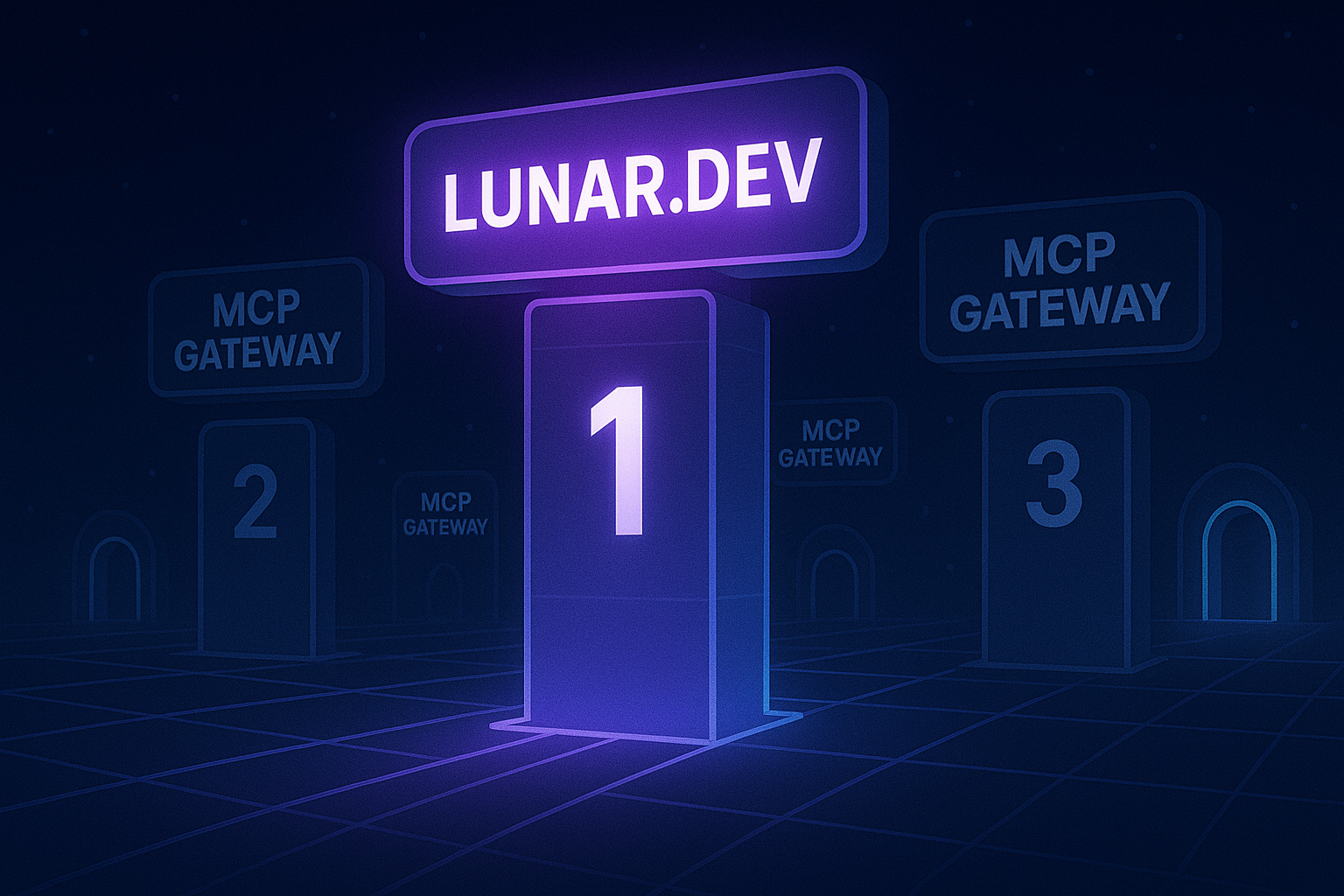
Best MCP Gateways of 2025: Why Lunar.dev Leads the Pack
Explore the leading MCP Gateway solutions of 2025, from Lunar.dev MCPX to TrueFoundry, Docker, and Azure. Discover which AI Gateway offers the best mix of governance, security, and performance for enterprise AI workloads.
Last updated: 14 October 2025
Looking for the best MCP gateway for your AI agents? This in-depth comparison explores the top MCP gateways on the market in 2025, including Lunar.dev’s MCPX, TrueFoundry, Docker, Solo.io, WSO2, Tyk AI Studio and Microsoft Azure. We explain why an MCP gateway matters, what features to evaluate and how each product stacks up. Use this guide to choose the right Model Context Protocol gateway for your enterprise.
The Model Context Protocol (MCP), introduced by Anthropic in late 2024, provides a standard way for large-language models and agents to call external tools. Instead of writing bespoke connectors for every service, developers can expose tools as MCP servers and let the agent send JSON-RPC instructions. While this protocol simplifies integration, it leaves open questions about security, access control, and observability. Connecting an agent directly to a dozen tool servers may work for demos but it quickly becomes unmanageable at scale¹,².
That is where an MCP gateway enters the picture. An MCP gateway sits between agents and tool servers and provides a single, governed entry point for every tool invocation. It centralizes authentication and authorization, adds audit trails and metrics, and often includes advanced features like caching or tool orchestration. If you are deploying AI agents in production, choosing the right gateway is now as important as choosing your LLM.
What to look for in an MCP gateway
A good MCP gateway should do much more than simply forward requests. Below are the capabilities that set apart enterprise-ready solutions from basic proxies:
- Centralized access and discovery: The gateway should expose one endpoint for all tool invocations so that agents do not need to manage multiple connections. WSO2’s gateway, for example, allows users to discover and manage MCP servers via a unified control plane¹. Centralization reduces integration overhead and ensures that new servers are onboarded consistently.
- Role-based access control (RBAC) and authentication: Enterprises need to decide which agents can call which tools. A gateway must support API key or OAuth authentication and allow fine-grained permissions per tool or user. Lunar.dev’s MCPX includes ACLs for defining global, service-level, or tool-level access³ and supports API key and OAuth authentication⁴, while Azure’s API Management integrates with Entra ID for RBAC².
- Observability and auditing: Agentic workloads can generate hundreds of tool calls per conversation. You need metrics and logs to understand performance, detect anomalies, and attribute costs. Moesif notes that gateways generate a consistent stream of telemetry¹. Lunar.dev’s MCPX exposes Prometheus-compatible metrics such as
tool_call_duration_mswith labels for tool name, error state, calling agent, and model⁵. - Tool scoping and customization: Allow administrators to customize or restrict tools to ensure safe use. MCPX lets you create customized variants of tools by rewriting descriptions or overriding parameters⁶. This helps guide LLMs toward safe usage and prevents unwanted actions.
- Scalability and deployment flexibility: Gateway infrastructure must scale with unpredictable agent workloads. Docker’s MCP gateway uses container-native orchestration to handle concurrency, while some gateways support federation across multiple nodes. It is also important to support on-premises or self-hosted deployments for compliance. Lunar.dev offers private deployment and VPC options for sensitive environments⁷.
- Integration with AI and API gateways: Combining MCP and API observability allows teams to see the full context of a request. Lunar.dev integrates MCPX with its AI Gateway so that teams can inspect agent prompts, sanitize data, and enforce policies across the entire agent workflow⁷. Kong and Tyk also provide MCP extensions to their API gateways¹.
When evaluating gateways, consider these dimensions in relation to your existing infrastructure and security requirements. The following comparisons focus on how each vendor addresses these needs.
Top MCP gateways in 2025
Lunar.dev MCPX

Lunar.dev’s MCPX is designed specifically for enterprises that need governed access to many MCP servers. Unlike generic API gateways, MCPX offers a suite of features tailored to AI workflows:
- RBAC & ACLs: Define global, service-level, or tool-level permissions for each agent using consumer tags³. Role-based profiles can enforce rate limits and budget constraints⁷.
- Authentication options: Supports API keys and OAuth for connecting agents to MCP servers⁴, plus SSO and IAM integrations for enterprise identity providers⁷.
- Local and remote deployment: Can run on Lunar’s managed service, in your own cloud, or on-premises; nothing leaves your domain⁷. This is crucial for regulated industries or customers with data sovereignty requirements.
- Tool customization & scoping: Create safe tool variants by rewriting descriptions or locking parameters⁶. This keeps LLMs on approved paths and helps optimize outputs.
- Safeguards and auditing: MCPX records every invocation in an immutable audit trail and exposes real-time metrics⁵,⁷. It also provides built-in DLP and SOC 2 compliance via integration with the Lunar AI Gateway⁷.
- AI gateway integration: Connect MCPX with Lunar’s AI Gateway to get end-to-end traffic inspection, prompt sanitization, and policy enforcement⁷.
Because of these capabilities, MCPX offers a holistic control plane for agentic AI. It is ideal for organizations that require fine-grained governance, auditing, on-prem deployment, and LLM-specific safeguards.
TrueFoundry MCP Gateway
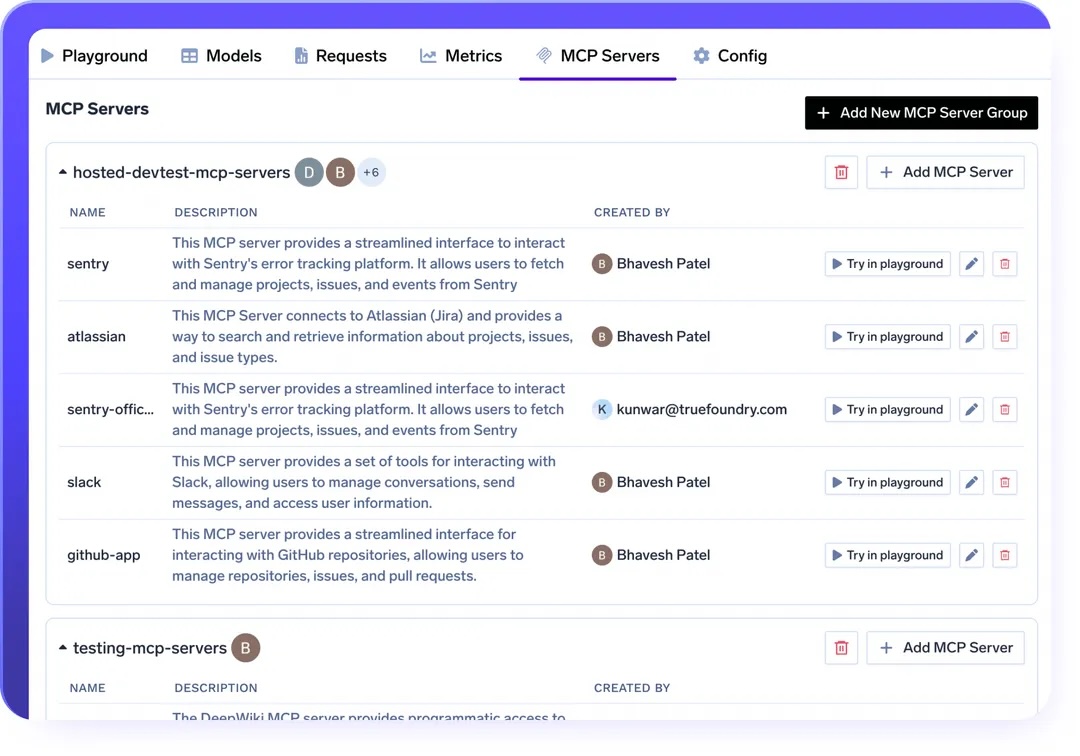
TrueFoundry extends its AI infrastructure platform to include an MCP gateway. It unifies the management of LLMs and MCP servers to provide a single control panel². Notable features include:
- Lightning latency: The gateway handles authentication and rate limiting in memory, achieving sub-3 ms latency under load².
- Centralized & integrated infrastructure: MCP server groups provide logical isolation for different teams². The gateway includes rate limiting, load balancing, guardrails, and unified billing².
- Unified AI and tool management: For teams already using TrueFoundry for model serving or tracing, the MCP gateway fits naturally into existing workflows, consolidating observability and cost tracking².
TrueFoundry is best suited for organizations that have standardized on its AI infrastructure and want low-latency, integrated deployment. Teams should be comfortable with container orchestration and the vendor’s ecosystem.
Docker MCP Gateway
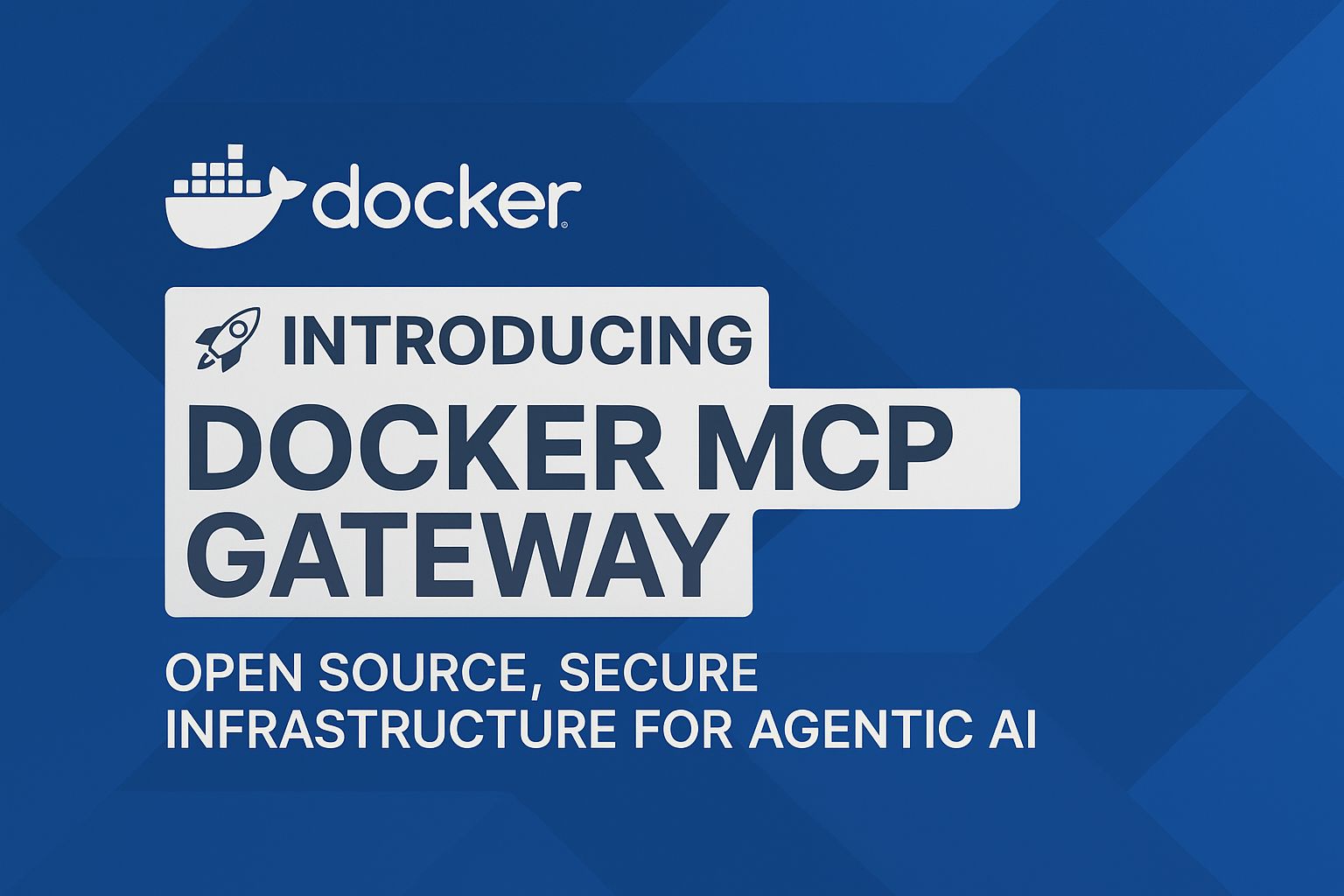
Docker’s open-source gateway applies container-native practices to MCP workloads. Designed for organizations already invested in Docker, it offers:
- Container-first deployment: Each MCP server runs in an isolated container with CPU and memory limits, protecting against runaway processes².
- Supply-chain security: Cryptographically signed images help verify the code being executed².
- Familiar tooling: Teams can deploy the gateway using Docker Compose, integrating easily into existing CI/CD pipelines¹.
The downside is limited observability and policy management², so Docker’s gateway works best for developers who want a quick way to containerize and secure MCP servers rather than full enterprise governance.
Solo.io Agent Gateway
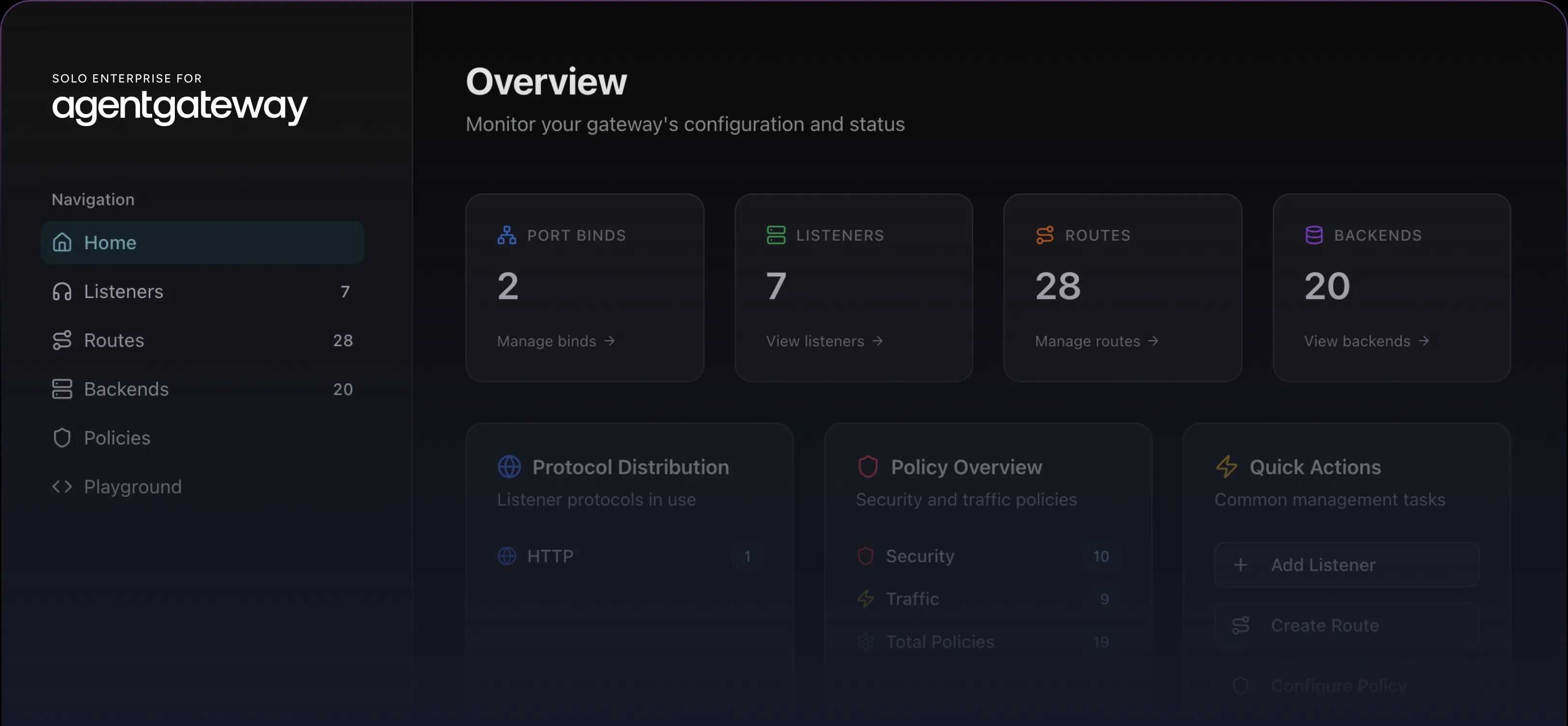
Solo.io’s Agent Gateway is an open-source data plane for agent-to-agent and agent-to-tool communication. It aims to be a service mesh for agentic AI:
- Unified data plane: Multiple backend types (MCP servers, other agents) are proxied through one endpoint¹. This allows consolidated tool access and supports agent-to-agent workflows.
- Service mesh DNA: Built on Envoy, it integrates naturally with modern service meshes and supports drop-in security and observability⁸.
- Developer-friendly: Because it is open source, teams can extend it with custom filters or integrate with existing infrastructure.
Solo.io is ideal for engineering teams comfortable with cloud-native technology and looking to unify agent and tool communication across a mesh. It does not yet provide the deep governance features of MCPX but is attractive for experimental or decentralized environments.
WSO2 MCP Gateway

WSO2 offers MCP gateway capabilities through its API Manager (APIM) and SaaS platform Bījira. Key characteristics include:
- Unified API & AI platform: Users can create, discover, and manage MCP servers alongside traditional REST APIs¹.
- Conversion from OpenAPI: You can create an MCP server from an OpenAPI specification or convert existing APIs into MCP servers¹.
- SaaS or self-hosted deployment: WSO2 supports both open source and enterprise deployments.
WSO2’s gateway is attractive for teams that already use its API Manager and want to extend it to AI agents. However, its MCP features are relatively new and may require integration work to achieve parity with dedicated gateways.
Tyk AI Studio
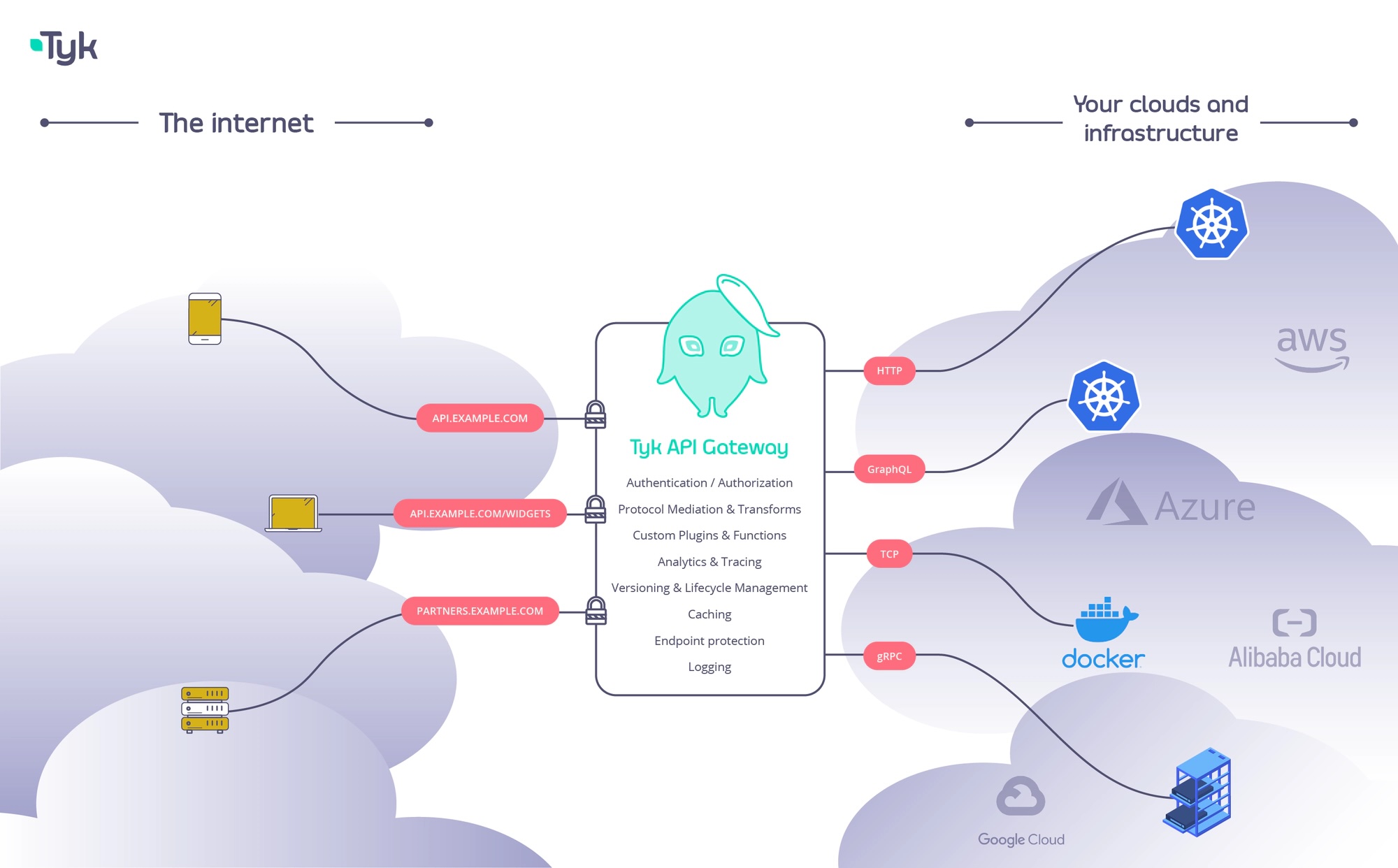
Tyk’s AI Studio brings MCP capabilities to a mature API gateway:
- Bridge between APIs and MCP: It allows organizations to expose internal tools and APIs as MCP servers¹. This means a single gateway can manage both API and agent traffic.
- Governance and monitoring: The integrated AI gateway provides built-in governance, monitoring, and security features¹.
- Policy engines and middleware: Tyk’s plugin architecture and support for Open Policy Agent enable custom authorization and rate-limiting policies⁸.
Tyk is a good option for enterprises that already use it for API management and want to add MCP without adopting a new platform. Like WSO2, its AI features are evolving, so careful evaluation of LLM-specific guardrails is recommended.
Microsoft Azure MCP

Microsoft does not offer a standalone gateway but extends Azure API Management (APIM) and related services to support MCP:
- Deep Azure integration: Identity management via Entra ID (formerly Azure AD) and OAuth flows simplify authentication². Kubernetes-native deployment handles multi-tenant routing².
- Partial MCP support: APIM can attach policies to MCP requests and integrate with Azure Functions and Logic Apps for enrichment⁸.
- Vendor lock-in considerations: APIM works best for organizations fully invested in the Microsoft stack. Multi-cloud or hybrid environments may face integration challenges².
Azure APIM is recommended for teams that want to extend their existing Azure investment to AI agents, but it lacks some of the AI-specific guardrails and observability found in specialized gateways.
Comparison summary
Conclusion
The Model-Context Protocol unlocks a new wave of AI capabilities, but it also introduces security, governance, and observability challenges. Enterprises adopting agentic workflows should select a gateway that aligns with their infrastructure and risk profile. While several vendors offer MCP support, Lunar.dev’s MCPX stands out for its combination of granular access control, flexible deployment, auditability, and deep integration with AI-specific safeguards. Its ability to customize tools, enforce per-agent policies, and connect to Lunar’s AI Gateway provides end-to-end coverage for sensitive AI operations⁷.
Choosing the right gateway is ultimately about balancing security, developer experience, and future-proofing. Investing in a mature platform like MCPX ensures that your AI agents can safely interact with the tools they need today while giving you the governance foundations required for tomorrow’s autonomous systems.
References
- Moesif Blog — Comparing MCP (Model Context Protocol) Gateways
- TrueFoundry Blog — Top 5 MCP Gateways of 2025
- Lunar Docs — Access Control List (ACL)
- Lunar Docs — Welcome to Lunar.dev MCPX
- Lunar Docs — MCPX Metrics
- Lunar Docs — Tool Customization
- Lunar.dev Product Page — MCP Gateway Overview
- Nordic APIs — 10+ API Gateways That Support MCP
Ready to Start your journey?
Manage a single service and unlock API management at scale






